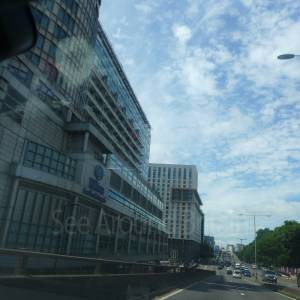Paddington Railway Station, London. Open daily. Free entry. Ticket fees apply.
Details
Accessibility:
There is a paid car park linked to the station complex with seven disability spaces, and there is step-free access to the station and lifts and escalators to all platforms. There are disability toilets (RADAR) situated near to platforms one and twelve. There is a ramp available for access from the platform to the train. Staff help is available for passengers with a disability 24 hours a day, every day.
Brief Description:
London Paddington railway station is a central London railway terminus and London Underground station. First opened in June 1838, London Paddington railway station was originally a temporary terminus for the GWR. Isambard Kingdom Brunel designed the main-line station which forms part of the current station complex.
https://en.wikipedia.org/wiki/London_Paddington_station
"Paddington, also known as London Paddington, is a London railway station and London Underground station complex, located on Praed Street in the Paddington area. The site has been the London terminus of services provided by the Great Western Railway and its successors since 1838. Much of the main line station dates from 1854 and was designed by Isambard Kingdom Brunel. As of the 2022–23 Office of Rail & Road Statistics, it is the second busiest station in the United Kingdom, after London Liverpool Street, with 59.2 million entries and exits.[9]
Paddington is the London terminus of the Great Western Main Line; passenger services are primarily operated by Great Western Railway, which provides commuter and regional passenger services to west London and the Thames Valley region, as well as long-distance intercity services to South West England and South Wales. The station is also the eastern terminus for Heathrow Express and the western terminus for Elizabeth line services from Shenfield. Elizabeth line services also run through Paddington westwards to Reading, Heathrow Terminal 5, and Heathrow Terminal 4, and eastwards to Abbey Wood.[10] Situated in fare zone 1, it has two separate tube stations providing connections to the Bakerloo, Circle, District, and Hammersmith & City lines. It is one of 11 London stations managed directly by Network Rail.
The station has been perennially popular for passengers and goods, particularly milk and parcels. Major upgrades took place in the 1870s, the 1910s and the 1960s, each trying to add additional platforms and space while trying to preserve the existing services and architecture as much as possible. Paddington was first served by London Underground trains in 1863, as the original western terminus of the Metropolitan Railway, the world's first underground railway. In the 20th century, suburban and commuter services appeared at Paddington as the urban sprawl of London moved westwards. Despite the numerous upgrades and rebuilding, plus damage sustained in particular during World War II, Brunel's original design is still recognisable."
https://www.bbc.co.uk/news/articles/cm20417e7gvo
Further Information:
Address:
London Paddington station, Praed Street, London, Greater London, W2 1HQ
Email:
customer.relations@nationalrail.co.uk
Phone:
National Rail Enquiries: 03457 48 49 50
Textphone: 0345 60 50 600
Website:
http://www.nationalrail.co.uk/stations_destinations/PAD.aspx
Opening Hours:
Open daily.
Directions:
The pedestrian entrance to London Paddington railway station is on Praed Street (A4205) in the Paddington area of central London. OS TQ265813
"The station complex is bounded at the front by Praed Street and at the rear by Bishop's Bridge Road, which crosses the station throat on Bishop's Bridge. On the west side of the station is Eastbourne Terrace, while the east side is bounded by the Paddington arm of the Grand Union Canal. The station is in a shallow cutting, a fact obscured at the front by a hotel building, but which can be clearly seen from the other three sides.[11] To the north of the station is the Westway, to the northeast is Edgware Road, and to the east and southeast is the London Inner Ring Road.[12] "
Transport:
Bus services operate in and around this area.
For more travel information go to http://www.traveline.info/
Amenities:
There is a large number of shops and cafes etc within the station area.
"The surrounding area is partly residential, and includes the major St Mary's Hospital, restaurants and hotels. Until recently there was little office accommodation in the area, and most commuters interchanged between National Rail and the London Underground to reach workplaces in the West End or the City. However, recent redevelopment of derelict railway and canal land, marketed as Paddington Waterside, has resulted in new office complexes nearby.[11][13]
The station is in London fare zone 1. In addition to the Underground stations at Paddington, Lancaster Gate station on the Central line is a short walk away to the south. A little further to the south lie the conjoined parks of Hyde Park and Kensington Gardens.[14] "
Travel Information
For further travel information please see: www.traveline.info
Or call Traveline on 0871 200 22 33
(Calls cost 12p per minute plus your phone company's access charge)
NB London ULTRA-LOW EMISSION ZONE
This started on 8 April 2019 in the Central London Congestion Charge Zone, and will extend to the whole of the London area within the
M25 Motorway from 25 October 2021.
For more details please see:
https://tfl.gov.uk/modes/driving/check-your-vehicle-35896
Vehicles registered with a 'disabled' or 'disabled passenger vehicles' tax class will benefit from a grace period after the ULEZ starts until 26 October 2025 as long as their vehicle doesn't change tax class, and this also applies to a 'disabled' vehicle registered outside the UK.











